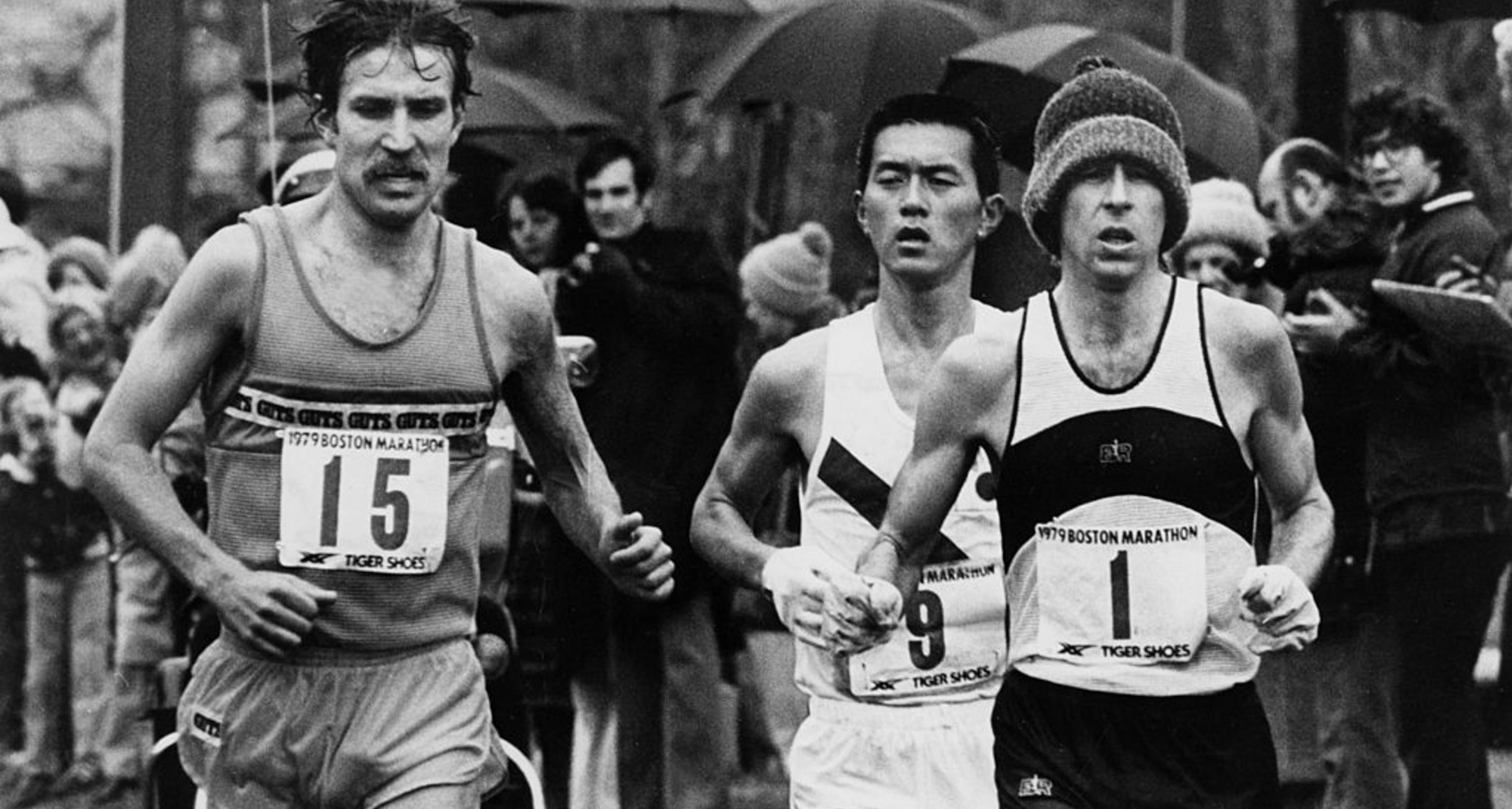

Blue Collar Inspiration For A White Collar Age
Words by Lou Serafini
Lead image from Getty
It must have been the winter of 2017 because it was the first year Randy Thomas was coaching me. We were still in the “pre-super shoe era,” at least for the general running population. Although we knew each other during my time at Boston College, we hadn’t been working together for long and hadn’t really developed an understanding of each other. RT, as many including myself refer to Randy, tends to be pretty blunt. It’s something I really appreciate; if he has something to say, he says it.
One day that winter, I was excited to try out my new HOKA Tracers for an indoor track workout. At the time, they were pretty unique to the world of racing and working out. Here’s what HOKA’s website said about them: “Good luck finding another shoe this light with this much cushion anywhere else.” That’s probably not true any more, but at the time, they didn’t look like traditional, lightweight flats. As I laced them up for the workout, RT glanced over and remarked, “what are those things?” I tried to explain the new trend around cushioned shoes, saving your legs from fatigue so you could work harder for longer, but he didn’t seem overly interested. As far as he’s concerned, it’s not about the shoes, it’s about putting in the work. Train smart, and compete.
What’s this story got to do with runners of the late 70s and early 80s era of distance running? Well, it relates to something that has always astounded me. When Bill Rodgers won the Boston Marathon in 1978 in a time of 2:10:13, RT was his teammate and finished fifth in 2:11:25. There were no super shoes or carbon plates or any of that nonsense. Those guys just went out there and ran fast; times many professionals would still kill to hit 40 years later.
I’ve never been a professional runner, but personally, I think Bill’s era gives runners like me hope. If they could do it then, why can’t we do it now? Why shouldn’t we go out and compete with the pros at the New York City marathon or qualify for the Olympic Track Trials? I’ve always loved this quote from Barbara Huebner on the Greater Boston Track Club website:
“On April 16, 1979, Rodgers ran 2:09:27 for his third Boston Marathon victory. No one was surprised. Randy Thomas came in eighth, in 2:14:12. No surprise there, either. But Bob Hodge bursting forth with a 16-minute PR to finish third, in 2:12:30? Dick Mahoney, a mailman, running 2:14:36 for 10th?”
You give that mailman a pair of super shoes and who knows, maybe he’s competing for a spot on the Olympic team.
As far as I understand it, these athletes weren’t doing anything fancy under their coach, Bill Squires. He believed that coming back to “go-to” workouts was one of the keys to success. Heartbreak Hill repeats, tempos on the Newton hills, mile repeats, like I said, nothing fancy. One time I asked RT to tell me what one of the hardest workouts they did back in the day. He told me about a session called “The Simulator” and it was a two mile in 9:00 on the old track at Boston College, a five mile tempo at marathon pace out and back on the Newton Hills, followed by a mile back on the track at 4:15. He also mentioned 6xMile with five minutes rest, starting at 4:25 and working down to 4:05. He also remarked over text that “Bill could never get under 4:10 lol” - but I’m paraphrasing at this point…
The bottom line is, these athletes had a coach they believed in and they spurred each other to work hard, day in and day out. That hard work has defined an entire era of distance running that I believe is a little overlooked. It’s inspiring, it gives us hope, and given that many of these guys worked manual jobs and still knew how to enjoy a beer, it’s also a reminder that running is only ever a part of a life, not the end all be all. Even the amateur can rise up to the top in this sport if they have the right attitude.
I should add, since adopting these more laid back philosophies and focusing on keeping things simple and having fun, I’ve improved my times from 14:40 to 13:47 in the 5k, 4:10 to 3:59 in the mile, 2:36 to 2:16 in the marathon, and 1:11 to 1:03 in the half marathon. All of these PRs (except the mile) are slower than RT’s, which he reminds me of constantly. After I ran 1:03:13 and won the Brooklyn Half in a new course record, he texted reminding me of his PR of 1:03:09, which was an American Record at the time. Joking aside, he always circles back to the number one most important thing, “keep raising the bar.”
Technology comes and goes, but the principles of surrounding yourself with people who humble and inspire you, belief in yourself and never settling, they are timeless, and they’re as true in 2021 as they were in 1981.